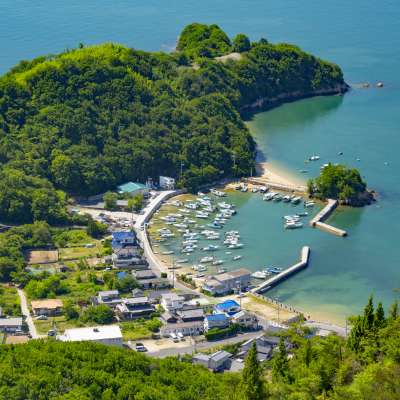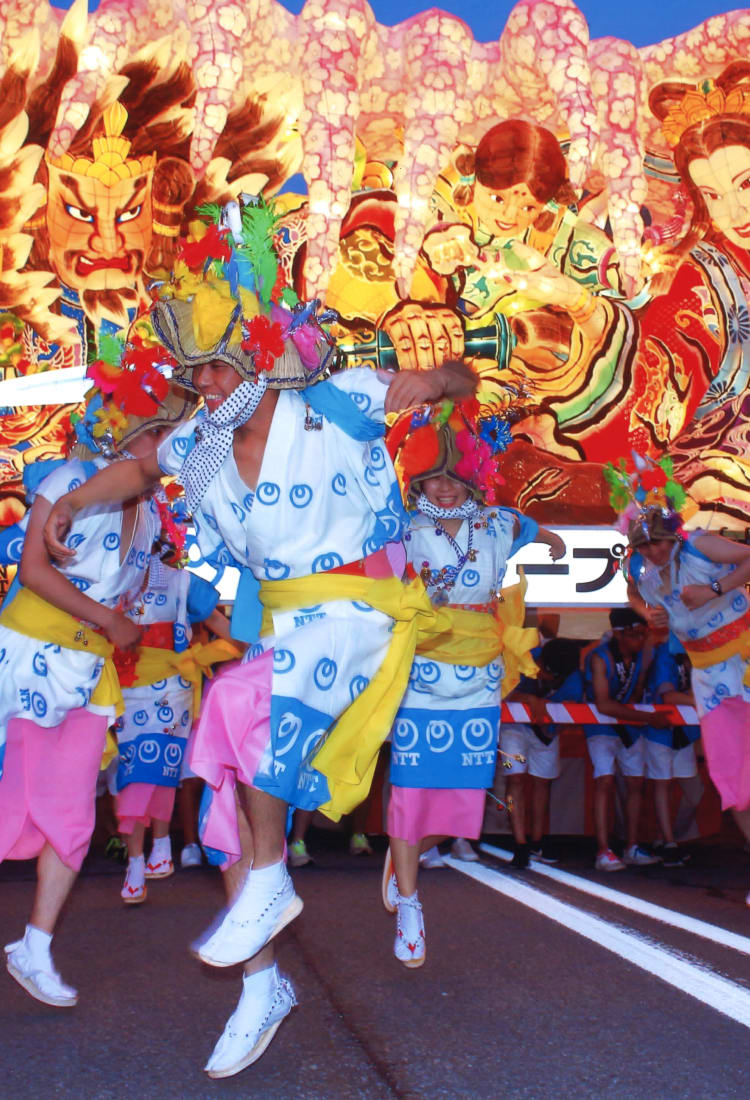
2023.07 Japanese Summer Festivals: Vibrant Celebrations of Culture and History Discover New Insights on your Japan Travels through Traditional Festivals
Photo credit: Aomori Tourism and Convention Association
Uncovering the history of Japan’s summer festivals
Visitors to Japan can expect to find unique celebrations whenever they arrive, but in the summer, from July to September, Japan's festivals step up a gear. Arrive in Japan during this time, and you'll be greeted by a cacophony of music, dance, and spectacle as traditional celebrations play out across the country.
These captivating celebrations, deeply rooted in ancient beliefs like Buddhism, coincide with the sacred period of Obon. Revered for centuries, Obon marks the spiritual return of deceased ancestors to their ancestral homes. Buddhists honor their presence through sacred dances, offerings of food and drink, and the placement of lanterns in waterways.

Floating candle-lit lanterns on waterways is a popular way to honor ancestors during Obon festival.
While many rituals and celebrations take place in the privacy of family environments, many festivals have arisen over the centuries where anyone can jubilantly celebrate en masse. Read on to learn about the most exciting, poignant, and culturally unique celebrations during Japan's traditional summer festival season.
Mind-boggling paper statues dazzle at the Aomori Nebuta Festival (August 2–7)
The Aomori Nebuta Festival is one of the most popular in Japan. Every year, nearly 2.5 million people descend on Aomori City in Japan's northeastern Tohoku region to experience a spectacle found nowhere else.
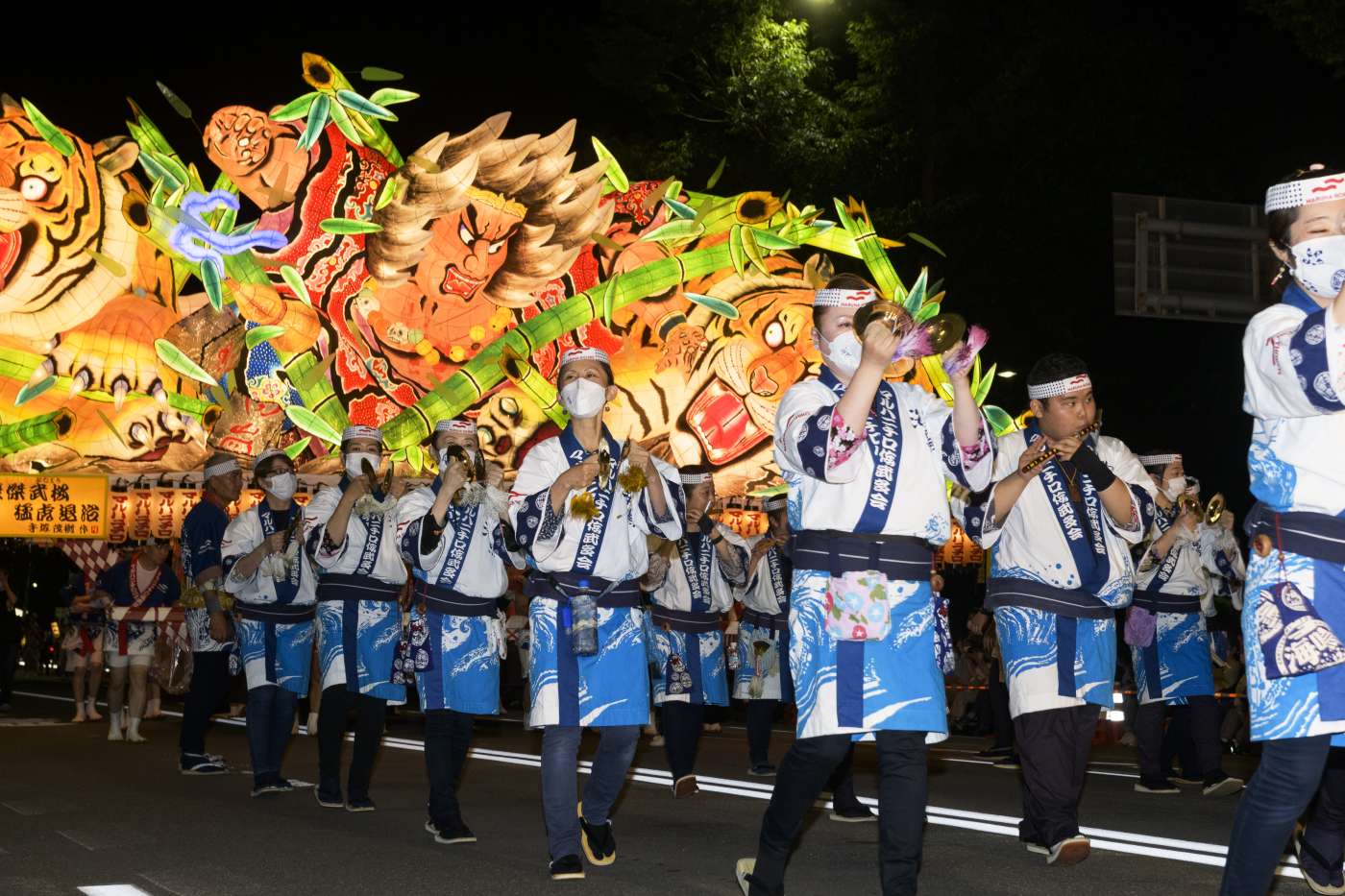
Nebuta Festival takes over Aomori City for a lively and exciting celebration for the ages.
Photo credit: Aomori Tourism and Convention Association
The biggest draw and the festival's namesake are the Nebuta. These vast floats are adorned with paper mâché characters from myth and legend: colorful, snarling warriors, bizarre monsters and lifelike animals. Alongside the floats, traditional Haneto dancers whip up a frenzy driven by the music of Nebuta bayashi bands. Visitors can even join in the dancing provided they wear the traditional Haneto costume, which is available for rent.
The intricate floats that take over the streets of Aomori City are a work of exquisite craftsmanship. Each Nebuta takes a full year to construct, all in aid of this unique six-day event. At the end of the festival, visitors are awarded a two-hour firework display, illuminating the city's skies and providing a fitting climax to this special event. Away from the main festival, visitors can learn more about the historical roots of Aomori Nebuta at the Nebuta Museum WA-RASSE.
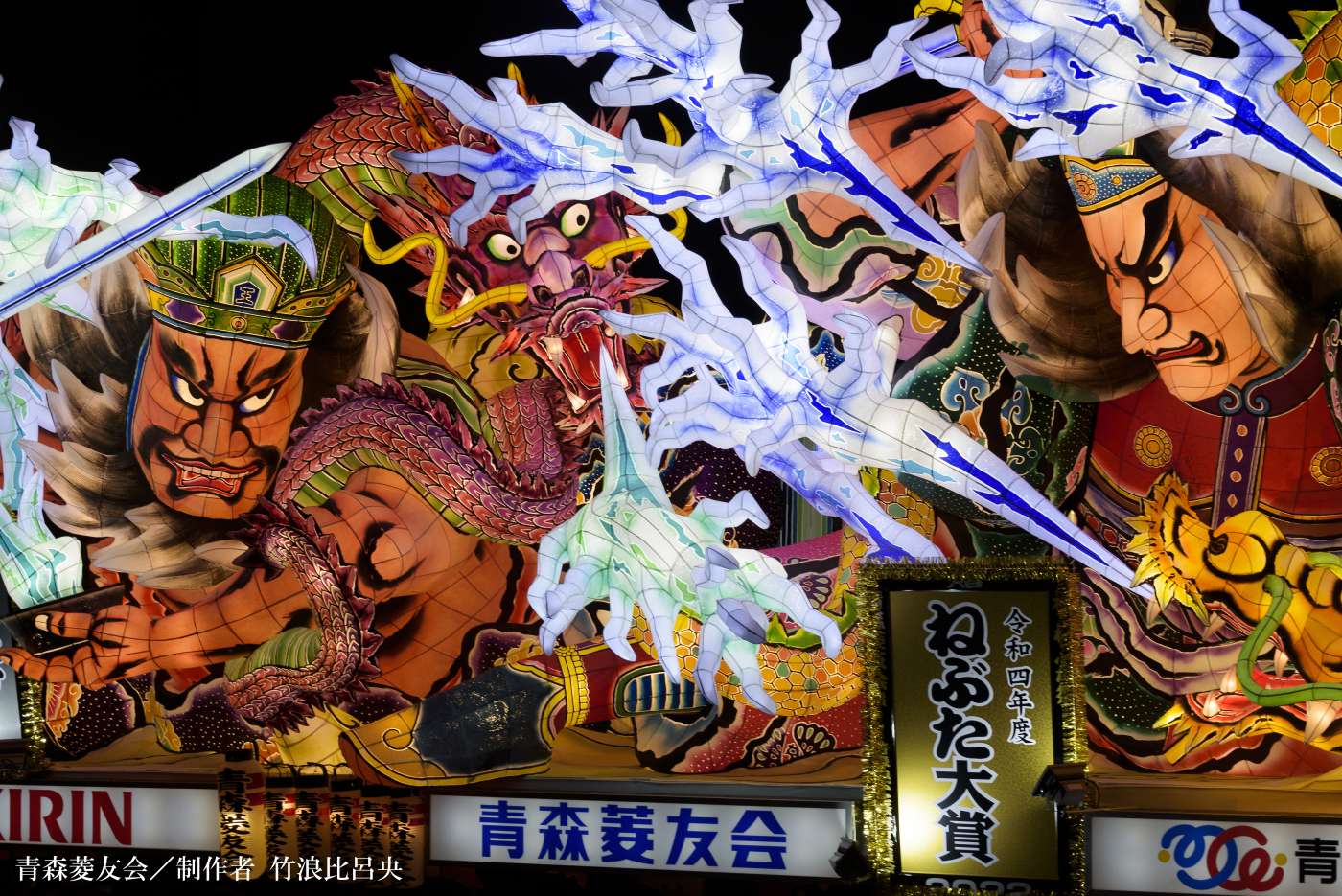
Unique paper mâché structures illuminate the night at The Aomori Nebuta Festival.
Photo credit: Aomori Tourism and Convention Association
See Sendai City transformed into a work of art during the Tanabata Festival (August 6–8)
The Chinese roots of Tanabata, the star festival, go back to an ancient story about two stars separated by the vastness of the Milky Way. In Japan, the stars are called Orihime and Hikoboshi and are desperately in love. Yet, thanks to the mechanics of space, and the wrath of Orihime's father, they can meet only once a year, and this date is celebrated during Tanabata.
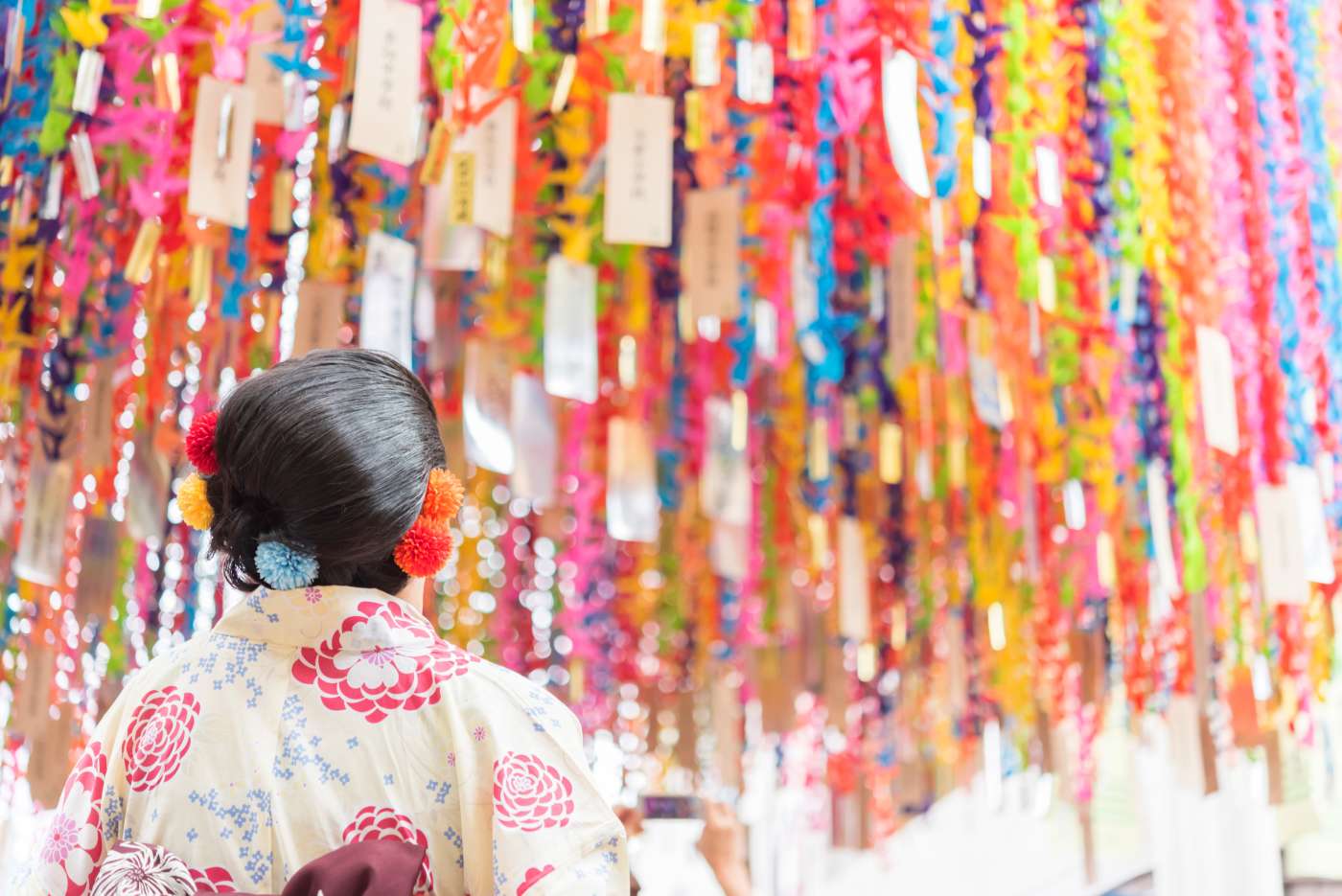
Color and poetic flair are all part of Tanabata’s summer celebrations.
While other areas in Japan observe Tanabata, it's in Sendai City that you'll find the most exuberant and dedicated celebrations, often with decorations going up early. Across the city, these handmade decorations adorn the facades of shops and businesses, locals wear striking summer kimonos called yukata, and meters-high streamers built from bamboo and washi paper cascade down from rooftops.
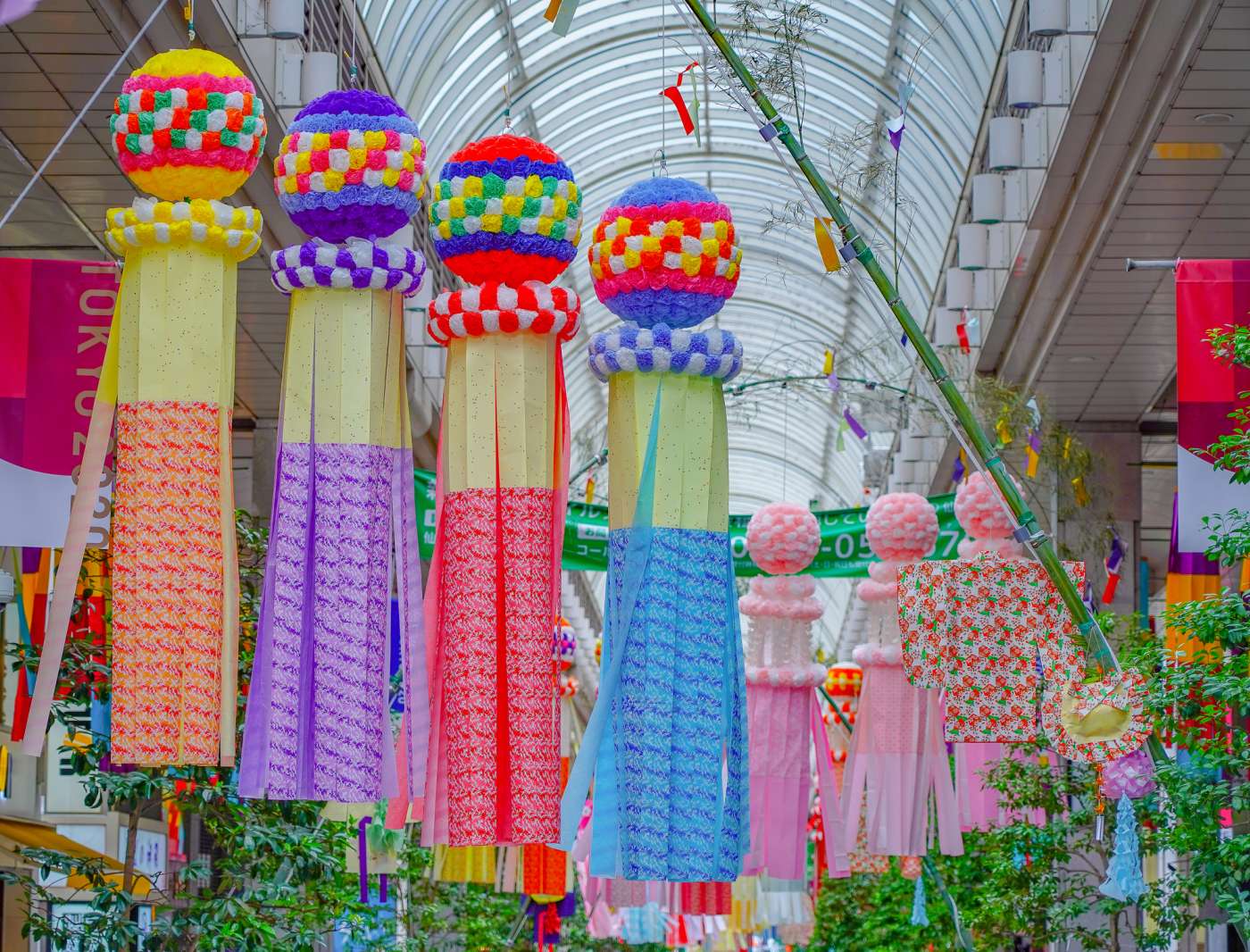
Towering decorations hang from bamboo poles in Sendai.
Sendai Tanabata begins with a dramatic fireworks show at Hirose River, igniting the festivities. This vibrant explosion of color is a precursor to the impressive displays that take over the city.
Strike a pose at Kochi's Yosakoi Festival (August 9–12)
From August 9–12, the streets of Kochi City in Shikoku throng to the movement of over 10,000 dancers. Kochi's Yosakoi Festival began as a source of joy for the local people, and is continued today as a yearly excuse to let your hair down and be swept away by the captivating dancers that flood the city's streets.
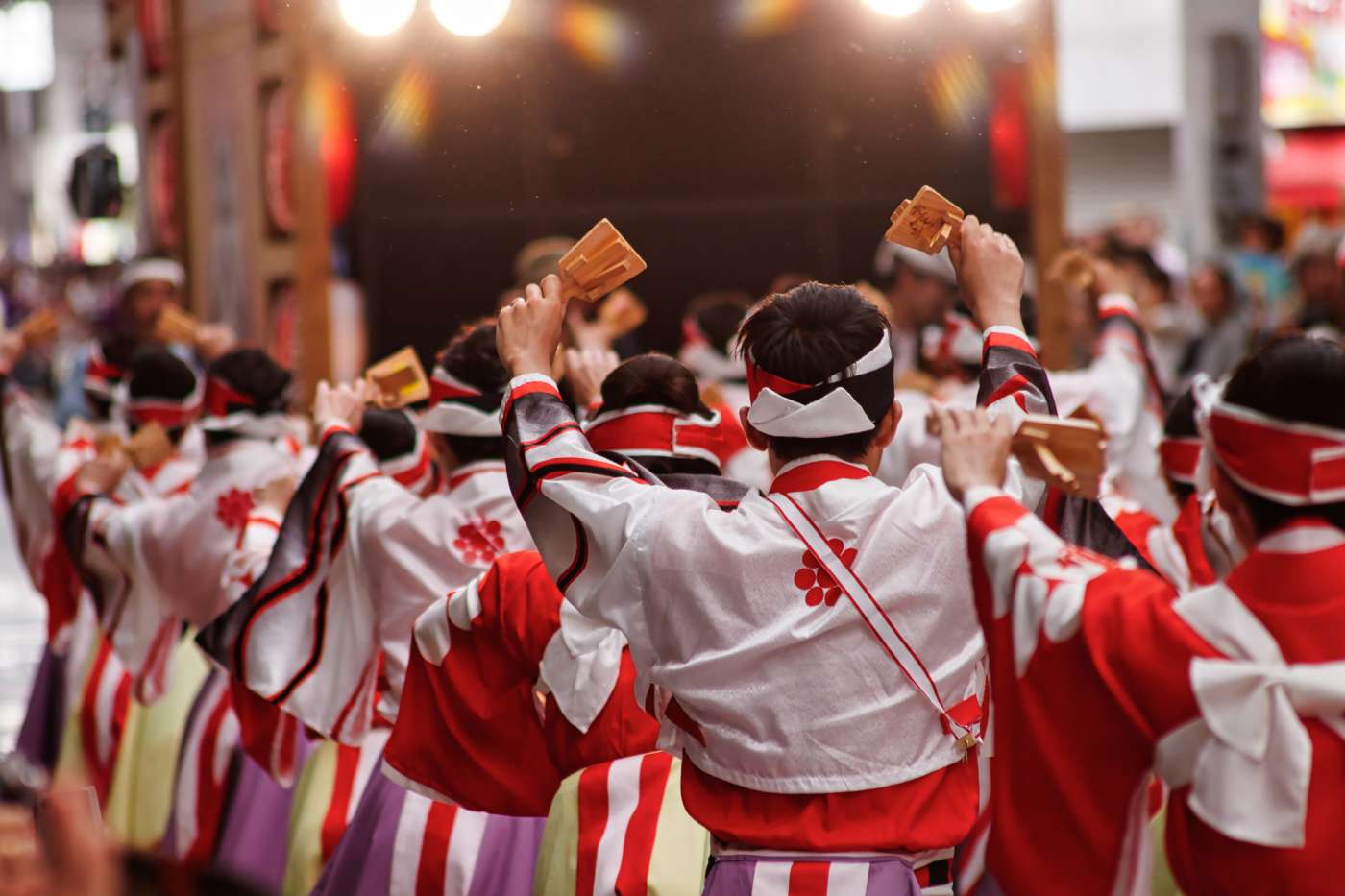
Dancers in unison flood the streets to flex their Yosakoi moves.
While the dancers keep time with traditional wooden instruments called “naruko,” they are joined by trucks, often laden with speakers and stewards in charge of encouraging the dancers through vocal chants and shouts. This helps them push the electric atmosphere even further to keep the party going. These floating party trucks are decorated to match the color of the dance teams they ride with, adding another level to this incredible spectacle for festival revelers.

A dance troupe breaks it down with exuberance at Kochi's Yosakoi Festival.
While the festival is all about enjoyment, there is a competitive edge. The dancers are split into teams, and at the end of the festival, one group is awarded the coveted recognition of the year's best dance troupe. This free-spirited dance and music festival is defined by color, with dancers wearing a massive range of vivid outfits, some traditional, others firmly in the spirit of celebration.
Mystery and myth collide at Shiranui's Fire Festival of the Sea (late August)
As with many summer festivals in Japan, Shiranui's Fire Festival of the Sea is born from a great legend. The story says that Emperor Keiko, over 1,000 years ago, went on a pilgrimage to Kyushu. The treacherous seas could have been his downfall, but a mysterious fire in the ocean guided him to the safety of the beach. The origin of this fire is celebrated today in Uki, Kumamoto Prefecture.
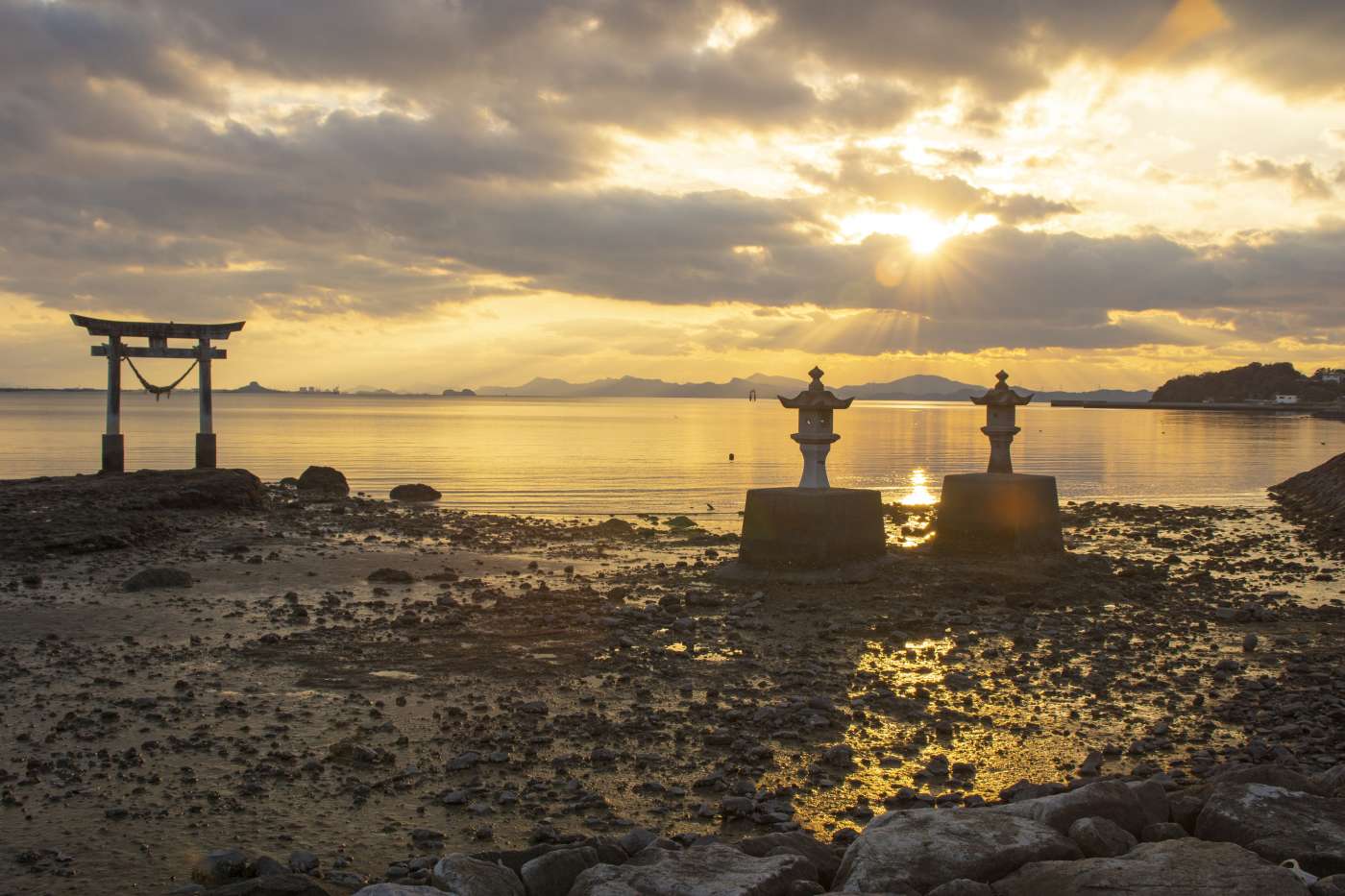
The Shiranui festival takes place at Einoo Tsurugi Shrine.
The fire was named Shiranui, the origin of the town's name, and every year, this miraculous phenomenon is celebrated. The phenomenon is, in fact, accurate. Shiranui's Fire Festival of the Sea is held at low tide when it is more likely to occur. And visitors to Shiranui's Fire Festival of the Sea may themselves witness this unique atmospheric optical illusion. However, the main draw is to see the dramatic celebrations from the shore.

Fireworks explode over the ocean during Shiranui's Fire Festival of the Sea.
Photo credit: Uki City
As dusk descends, a boat with the mayor and a person dressed as Emperor Keiko nears Nagao Shrine's torii gate, setting the stage for flaming arrows to be shot into the sea. Elaborately dressed participants greet the boat and escort the passengers to the main square with a torchlit procession, and the festival peaks with a stunning firework display over the water.
Participate in a Japanese festival for an unforgettable experience
Japan offers many incredible experiences in terms of adventure, exploration, culinary delights and natural wonder, but participating in a Japanese summer festival can give visitors a sense of real connection to Japan. With deep historical and cultural roots, summer festivals are a core component of Japanese national character. We hope participating in one will give you an understanding of Japan, and make your trip even more memorable.
Information
Aomori Nebuta Matsuri |
Sendai Tanabata Festival |
Kochi Yosakoi Festival |





















































